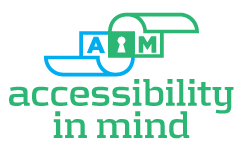Below is Section 1.8.1 from an SSA Guide to producing compliant Word-PDF documents.What do you think? Is this in conflict with standard HHS compliance checklist? Sounds like fully qualified URLs aren't really that important, and actually make a document LESS accessible. Make sure documents have proper tagging of hyperlinks for common sense accessibility:
When a Screen Reader is reading text and there is a
link, the software will insert the word "Link" in front of the text
to alert the user that this is a selectable hyperlink.
Another way that Screen Readers can access the links
that are in a document is for them to call up a list of links. This list will
display only the text that has been marked as a link.
It is important that the list of links makes sense to
the user when it is read out of context. That
is, the name of each link should make sense in the list when it is read in
isolation.
Consider the following four examples of the same text
and same link rendered using different methods:
1.
Please read The SSA Online Accessibility Policy.
Click Here
If every link in the document was rendered using method
#1, the list of links would read like this:
·
Click Here
·
Click Here
·
Click Here
·
Click Here
It is easy to see that individual links are not possible
to read out of context.
If every link was rendered using method #2, the list
would read like this:
·
http://www.ssa.gov/webcontent/accessibility.htm
·
http://ssa.gov/pgm/links_disability.htm
·
http://www.section508.gov/
This list also makes no sense in context. While we
might be comfortable in normal conversation saying "go to s s a dot
gov" we generally do not say to people "go to s s a dot gov slash p g
m slash links underscore disability dot h t m". It is too long and it is
too difficult to understand. However, when the list of links is presented this
way, this is exactly how the Screen Reader will say each link.
If every link was rendered with method #3, the list
would be read like this:
·
The SSA Online Accessibility Policy
·
SSA Disability Benefits
·
GSA's Section 508 website
Using this method, all of the links make sense when
spoken out of context. This is the best
method to use.
Where it is important to have the URL displayed on the
printed page, Method #4 is the same as method #3, but with the URL also spoken
in the list. This method is perfectly acceptable, so long as the name comes
first and the URL comes last in each link.
--------------------------------------------------------------------
B) Development Methods
1.
Right click any hyperlink in the document.
2.
Make sure that in the Hyperlink dialog box the 'Text to display' field has a link name
that makes sense when spoken in isolation.
Note: See Rationale, above for an explanation of how
links are spoken by Screen Readers.
C) Testing Methods
Examine the document for instances of links that have
names like 'Click Here', and/or links that are just URLs, like http://ssahost.ba.ssa.gov/arc/.
These links need to be remediated according to Development Methods, above.

